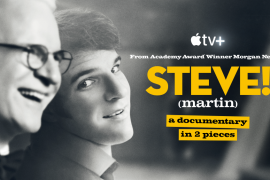 |
| Bryan Cranston finds a moment of peace in a Volvo |
SPOILER ALERT: DO NOT READ ANY FURTHER IF YOU HAVE NOT SEEN THE SERIES FINALE OF BREAKING BAD. As Jesse would say, good luck dodging all the other spoilers already out there, Bitch!
How fitting that it all ended with Breaking Badfinger.
Sunday’s riveting–if you could get through all the commercials–75-minute Breaking Bad series finale ended a run of six tremendous episodes. Creator Vince Gilligan and his writers, actors, editors, cameramen, etc. crafted one of the greatest TV miniseries ever with that final six.
Based on Sunday’s finale, Gilligan could have a great career as a director if he chose to narrow his talents down to one field. Sunday’s finale ranged from those great John Ford desert vistas to some simple point-of-view camerawork worthy of Hitchcock. The camera always seemed to be perfectly placed, never showy, not even in that last overhead crane shot of Walter White. There lies Scarface, but it was Walter White–under the shadow of the cross–who died for our sins. Amen.
Gilligan’s use of music was eccentric yet precise. From Marty Robbins to Badfinger’s Baby Blue, there was nothing subtle about the lyrics. Walter White indeed got what he deserved. As has already been tweeted, Baby Blue is to Breaking Bad what Don’t Stop Believin’ was to The Sopranos: the perfect musical ending.
But Lydia the Tattooed Lady?? Hearing that ring tone almost made me want to break down and buy a cell phone. “She has hips that men adore so/Now she’s deader than a corpse-O.”
Gilligan showed that ability to throw a comical monkey wrench into the middle of even the most intense scene. It was jarring and delightful.
As for the acting, Bryan Cranston took this character to the very end without a single misstep. It is a towering performance. Think about it: the character is dying. He’s been rejected by the only people that matter to him, his family. He’s been betrayed, robbed, and abandoned. The series could have ended with White’s frozen body, clutching what’s left of his drug money, alone in Robert Forster’s isolated cabin in the woods.
Yet White remains bad ass to the end. It’s not likely he gets from New Hampshire back to Albuquerque with those plates without getting busted. How does this most-wanted criminal get into his wife’s hideout, or his old house?
At this point, however, Walter White has earned the same suspension of disbelief accorded to Iron Man, or James Bond, or any super hero. He’s operating in TV reality.
Gilligan keeps bringing it all back down to earth by having characters ask if the Caddie White stole is a “500.” People are distracted by trivial things, even unto death, as Gilligan points out.
The scene in the house between Walter and his wife Skyler (Anna Gunn) puts one more Emmy trophy on Cranston’s mantle, and maybe Gunn’s, too. There’s no more hate or fear, just love and sorrow. It’s a bit pat, allowing White one more glimpse of his baby daughter in the crib before the High Noon showdown, but that’s what makes epic TV epic. The extent of what was communicated by what wasn’t said in that scene should make it required viewing in any writing class.
Kudos to Gilligan and company for getting it done in 62 episodes (and cramming them all into those cool looking little barrels AMC was shilling in the commercial breaks). There are loose ends; what happens to Jesse? Will the money go to the kids? There was so much resolved in that ending, though, that everybody can just move on.
As for Internet braying, “That’s how you end a series, David Chase,” I say hold on. The Sopranos ending, as Gilligan said in AMC’s Talking Bad after show, was the perfect ending for that series. Chase refused to put his own bow on his show and respect him for that. Gilligan had to end with a pay off to all that built-up intensity, and he came up with one that provided White with an exit that seemed all the more heroic in that he took all the real bad guys down with him at the end–including Lydia.
Chase will never be accused of providing an ending that was too neat and tidy, as Gilligan may hear from some corners. White found a measure of redemption he probably didn’t deserve. Whatever; I liked how he went down, with the ship, like Captain Nemo at the end of 20,000 Leagues Under the Sea, surrounded by his evil, brilliant, invention.
As for a spin-off, sure, I’ll take Odenkirk’s show, but I think I’d rather see a series based on Robert Forster’s hider of lost souls. Call it Secret Identity Man. Do it, AMC.







